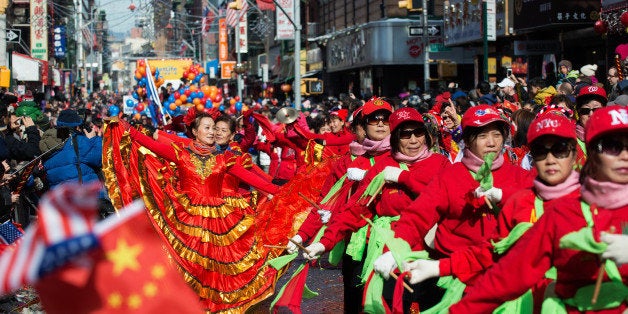
by Taeku Lee
A major new Pew Research study, released on the 50th anniversary of the 1965 Immigration and Nationality Act, documents the rapid demographic changes to the U.S. population in recent decades. Among its key findings, the Pew study shows that Asian Americans are the fastest growing immigrant group in the country and will comprise the largest immigrant population in the nation in several decades.
You wouldn't know these facts if listening to the Republican candidates on the campaign trail. After two GOP debates, the only mention of Asian Americans has been acid reference to "anchor babies," with Governor Jeb Bush charging Asian Americans of "taking advantage of a noble concept of birthright citizenship" and Senator Lindsay Graham accusing them of "bastardizing citizenship." Then there's Donald Trump's rhetoric on China, culminating in his cri de coeur of "we want deal!" in mock broken English before an audience in Dubuque, Iowa.
The prevailing view among many clearly remains that the Asian American vote is ignorable, expendable, or exploitable. Asian Americans, so the shibboleth goes, are too small of a group or are too uninterested in party politics to matter and make a difference. So why not exploit them for political gain? Here's why that thinking is wrong and outdated.
The Asian American population increased 46 percent between 2000 and 2010, more than any other group over this period. They are also the largest feeder of population growth through legal immigration since 2008. Thus, where Asian Americans numbered fewer than one million before 1965, they are now 20 million strong. As a share of voters, Asian Americans have been the fastest growing electorate over the last five presidential elections, growing from 1.7 million voters in 1996 to 3.9 million by 2012.
Presidential exit poll results show a recent and clear pattern of growing Democratic loyalties. In 1992, only about 1 in 3 Asian American voted for the Democrat, Bill Clinton, but by 2012, nearly 3 out of 4 supported Barack Obama. In the 2014 mid-terms, Democrats had a 2:1 edge, according to an Election Eve poll from Asian American Decisions.
Yet when asked the standard party identification question, many Asian Americans avoid associating themselves with either Democrats or Republicans in favor of independent status. In the 2014 Election Eve poll, 40 percent of Asian American voters identified as Democrats, 22 percent as Republicans, and 39 percent self-identified as independents.
Given the Republicans' need to adjust to changing demographics of the electorate and the Democrats' goal of consolidating their recent support, both parties should recognize these unaffiliated Asian American voters as prime targets--with the potential to play a decisive "swing" role in a growing number of 2016 battleground races.
Consider here the 2014 Virginia Senate contest. Although Asian Americans comprised only 5 percent of the Virginia electorate, they accounted for Mark Warner's margin of victory. Warner edged out Ed Gillespie by only about 18,000 votes. According to an election eve poll by Asian American Decisions, Warner won the Virginia Asian American vote by nearly 40 percentage points over Gillespie, 68 percent to 29 percent--a margin representing approximately 30,000 votes in the state.
Importantly, 2016 may see more Virginias. Likely battleground states such as Nevada and Florida have sizeable and growing Asian American populations. Between 2000 and 2010, the Asian American population grew 116 percent in Nevada and 72 percent in Florida. Both states also have large numbers of unregistered Asian American citizens (more than 37,000 in Nevada, about 200,000 in Florida). In fact, nationally, although 3.9 million Asian Americans voted in 2012, a whopping 4.3 million eligible voters sat it out.
Whether Asian Americans are the margin of victory in key 2016 races will ultimately depend on the two parties and their candidates. If the current field of GOP candidates continues to pollute the air with anti-immigrant rhetoric, Asian Americans may well fulfill their prophesied role as the "canary in the coalmine"--as Jeb Bush labeled Asian Americans in 2013--for a Republican Party incapable of adapting to what the American general electorate looks like in 2016.
Taeku Lee is Professor of Political Science and Law at the University of California, Berkeley and Managing Director of Asian American Decisions
